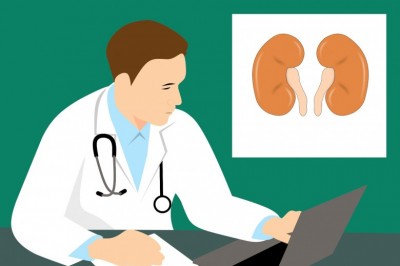The Anatomy of Cellulite and Stretch Marks: Causes and Effects
You know that fatty tissue is found in most parts of your body to varying degrees. It primarily functions as a protective cushion for your organs and as an energy reserve. When you reduce your normal intake of food, your body automatically burns its own reservoir of stored fat. On a low-calorie diet, fat comes off in many areas, but the cellulite bulges remain.
The fat beneath the skin that you see in the diagram on page 13 is the fat that covers your muscles. It is the fat that accumulates when you eat more calories than you use, and the fat that comes off when you diet and exercise. This fat does not contribute to cellulite or stretch marks. When you lose weight, no matter what diet-exercise program you use, the percentage of body fat decreases, but there is no measurable loss of cellulite. This is because the body cannot utilize fat trapped in the dermal layer, the fat that actually contributes to cellulite, as fuel.
The main problem with most other cellulite treatments is that they address only the fat below the skin and fascia. This approach cant work because the subdermal fat cannot react to treatment as the normal fat can. Unfortunately, that dermal fat that causes cellulite is there to stay. The good news is that with a few simple steps every day, you will never have to notice it.
The Skins Layers
The stratum corneum is the uppermost layer of skin. It i, made up of dead and dying cells held together by a lipid (fat membrane. As these cells fall off, new cells are produced at the bottom of the epidermis, pushing everything above them up. Think of the stratum corneum as the roof of your house. It is the protective shield against the ravages of the environment.
Living epidermis is the top layer of skin, encompassint the stratum corneum and the skin cell layer below it. It contain, dying cells that have less and less water as they move up into the stratum corneum. This is an important defense against incoming damage such as the suns rays and other environmental stresses.
The dermis is made up of fibrous material, collectively known as the bodys matrix, plus other elements. In a way it is a microcosm of the rest of your body. It has blood vessels, nerves. connective tissue, glands, and other organelles such as hair follicles. The dermis makes up the bulk of your skin. It gives the skis its resiliency. A healthy dermis shows up as firm skin; an un- healthy dermis shows up as wrinkles and sags. The dermis i- made of
• substances called glycosaminoglycans (or GAGs), semisolid material that has a great deal of water-bondin,; ability.
• collagen and elastin, the "frames" of the dermis. If you think of the dermis as a mud hut, the matrix would be the mud, and collagen and elastin would be the straw fibers holding it together. The breakdown of collagen and elastin is the direct cause of wrinkles.
Subdermal fat is the fat that is trapped below the dermal layer where it cannot be burned as fuel. If the dermis and epi-dermis above it become damaged and weaken, this fat will pus its way toward the surface and become visible cellulite.
Fascia is fibrous material that separates various body corn ponents. If you think of a steak, the fascia is the dense white material that separates the meat from the fat.
Normal fat appears when we overeat, and it is burned a fuel when we exercise. It does not contribute to cellulite.























